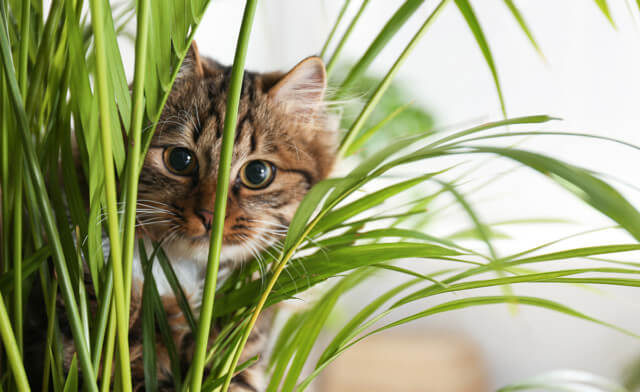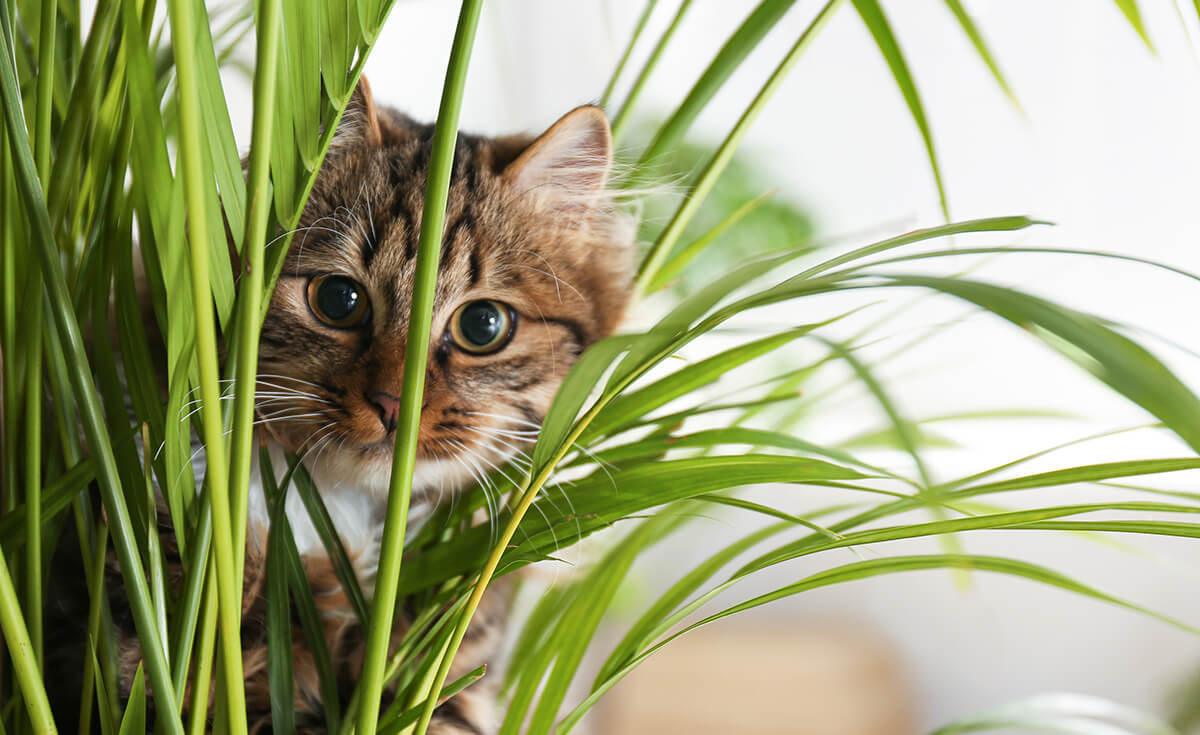Imagine this: You’ve just brought home a beautiful snake plant to add a touch of greenery to your living space. It’s stylish, low-maintenance, and perfect for the busy pet parent.
But wait—your cat, with its curious nature, seems drawn to this new addition, and you start to wonder: is this plant safe for your feline friend? You’re not alone in your concern. Many pet parents face the dilemma of balancing a love for plants with the safety of their furry companions.
Knowing what’s safe and what’s not can be tricky, especially when it comes to household plants like the popular snake plant. In this guide, you’ll uncover the truth about snake plants and their potential risks to your cats, helping you make informed decisions for a harmonious home environment. Stay with us, as we dive into everything you need to know to keep your cat safe while enjoying the beauty of your indoor jungle. Your peace of mind is just a scroll away!

Credit: www.earthbornholisticpetfood.com
Snake Plant Overview
Snake plants, popular for their air-purifying qualities, can be toxic to cats. Pet parents should ensure these plants are out of reach to prevent any adverse effects on their furry companions.
If you’re a cat owner with a love for houseplants, you might be familiar with the Snake Plant, also known as Sansevieria. Its striking appearance and easy-care nature make it a popular choice for homes. However, if you’re sharing your space with furry friends, it’s important to understand how this plant might affect them. Let’s delve into the world of the Snake Plant to see if it’s a safe addition to your home.What Is A Snake Plant?
The Snake Plant, with its tall, sword-like leaves, adds a touch of elegance to any room. It’s known for its resilience, requiring minimal water and thriving in low light, making it perfect for those without a green thumb. This plant not only beautifies your space but also purifies the air, absorbing toxins like formaldehyde and benzene.Why Is It Called A Snake Plant?
You might wonder about the name “Snake Plant.” It’s not because it attracts snakes, but rather due to its unique leaf pattern, resembling the scales of a snake. This visual appeal often makes it a conversation starter in many homes.Common Varieties Of Snake Plants
While the most common type is the Sansevieria trifasciata, there are several varieties to choose from. The ‘Laurentii’ has yellow borders that stand out, while the ‘Cylindrica’ offers a more cylindrical leaf shape. Each variety brings its own charm and can fit into different aesthetic preferences.Benefits Of Having A Snake Plant
Beyond its aesthetic appeal, the Snake Plant is a champion at improving indoor air quality. It releases oxygen at night, making it an excellent bedroom companion. Its low maintenance nature means you can enjoy these benefits without the stress of constant care. As a cat owner, it’s crucial to consider the potential risks before adding a Snake Plant to your collection. What might seem like a harmless addition could pose challenges if your feline friend decides to nibble on those intriguing leaves. Would you trade off the benefits for a potential risk to your pet’s health?
Credit: allsnakeplant.com
Common Houseplants And Pets
Common houseplants can be beautiful additions to any home. They bring life and color into rooms. Many pet owners enjoy the natural touch plants offer. Yet, some plants pose risks to curious pets, like cats.
Understanding which plants are safe can prevent health issues. Snake plants are popular choices. But are they safe around cats? Let’s explore the connection between houseplants and pets.
Snake Plants: A Popular Choice
Snake plants are famous for their easy care and striking look. They thrive in different light conditions. Their tall, green leaves make them attractive indoor plants.
Are Snake Plants Toxic To Cats?
Snake plants are mildly toxic to cats. If ingested, they cause upset stomachs and vomiting. Keep snake plants out of reach to protect your feline friends.
Signs Of Poisoning In Pets
Look for signs like drooling, vomiting, or diarrhea. These indicate your pet may have ingested a toxic plant. Consult your vet immediately if you notice these symptoms.
Safe Alternatives For Cat Owners
Choose cat-friendly plants like spider plants or bamboo palms. These are safe and pose no threat to your pets. Research plants before adding them to your home.
Place plants in areas inaccessible to cats. Use shelves or hanging planters to keep plants out of reach. A safe environment keeps both your plants and pets happy.
Toxicity Concerns
Many pet owners worry about houseplants and their pets. Snake plants, known for their resilience, have a hidden side. They can be toxic to cats. Understanding the risks can keep your feline friend safe. Let’s explore the toxicity concerns related to snake plants.
Symptoms In Cats
Cats may show various symptoms after ingesting snake plants. Common signs include drooling and nausea. Vomiting can also occur. These symptoms indicate a reaction to the plant’s saponins. Your cat might also experience diarrhea. Watching for these signs is crucial.
Severity Of Toxicity
Snake plant toxicity is usually mild to moderate. It rarely leads to severe health issues. Most cases resolve with time and care. However, persistent symptoms need veterinary attention. Immediate care can prevent complications. Cats differ in their reactions, so monitor them closely.
Preventive Measures
Snake plants can be harmful to cats if ingested, causing nausea and vomiting. Keep these plants out of reach. Consider using cat-safe plants to ensure your pet’s safety.
Are you worried about keeping your beloved cat safe from potentially toxic plants like the Snake Plant? Many pet parents share this concern. The good news is, with some preventive measures, you can create a safe environment for your feline friend without sacrificing your love for greenery. Here’s how you can ensure your cat remains healthy and happy, even when surrounded by plants.Cat-friendly Plant Alternatives
Choosing the right plants can be a game changer. Instead of Snake Plants, consider opting for cat-friendly options like Spider Plants, Boston Ferns, or Areca Palms. These plants not only beautify your space but also pose no threat to your curious kitty. Spider Plants are particularly appealing as they are resilient and require minimal care. Boston Ferns add a lush touch to your home and are safe for pets. Areca Palms are perfect for brightening up a room and are completely harmless to cats.Safe Plant Placement
Where you place your plants can make all the difference. Position plants on high shelves or in hanging pots out of your cat’s reach. This simple step can prevent unwanted nibbling and potential health issues. If your cat is a jumper, consider using plant stands or decorative barriers as an added layer of protection. You can also create a dedicated plant area in a room that’s off-limits to your pet. This allows you to enjoy your greenery while keeping your cat safe. Have you ever caught your cat eyeing your plants with curiosity? It’s a common behavior. But with these preventive strategies, you can ensure your home is both a green sanctuary and a safe haven for your furry companion. What steps will you take today to protect your cat and your love for plants?Immediate Actions
Snake plants can be harmful to cats if ingested, causing nausea or vomiting. Remove the plant immediately to prevent further risk. Consult a vet if symptoms persist.
Immediate actions are essential if your cat ingests a snake plant. Swift responses can help prevent serious health issues. Understanding the first steps to take is crucial for pet safety. Below, we discuss recognizing symptoms and seeking veterinary help.Recognizing Symptoms
Cats may show symptoms after eating snake plants. Common signs include vomiting and diarrhea. You might also notice drooling or lethargy. Pay attention if your cat becomes unusually restless. Difficulty breathing is another concerning sign. Keep a close eye on your pet’s behavior. Early detection can make a big difference.Seeking Veterinary Help
Contact your vet immediately if you suspect ingestion. Provide details about what your cat ate. Mention any symptoms you’ve observed. Follow the vet’s instructions carefully. Your vet may ask you to bring your cat in. Timely medical attention is crucial. It helps ensure your cat’s health and safety.Creating A Safe Environment
Pet owners often worry about houseplants like snake plants being toxic to cats. These plants can cause mild digestive upset if ingested. Creating a safe environment for pets involves knowing which plants to avoid.
Creating a safe environment for your feline friend is crucial, especially when it comes to plants like snake plants, which can be toxic to cats. While these plants are popular for their air-purifying qualities, they pose a danger if your cat decides to nibble on them. So, how do you ensure your home remains both stylish and safe for your pet?Training Cats To Avoid Plants
Cats are curious creatures. If you’ve ever caught your cat in a plant pot, you’re not alone. To curb this behavior, consider using deterrents like citrus sprays. Cats generally dislike these scents. Engage your cat with interactive toys or cat trees to divert their attention from plants. Positive reinforcement can also work wonders. Reward them when they steer clear of forbidden plants. Have you tried clicker training? It can be an effective method to teach your cat what’s off-limits.Regular Health Checks
How often do you visit the vet? Regular health checks are vital. They ensure your cat hasn’t ingested anything harmful. Early detection of plant toxicity can prevent serious health issues. Keep an eye out for symptoms like drooling, vomiting, or lethargy. These could be signs your cat has nibbled on something toxic. Is your vet familiar with your home’s plant inventory? Share this information during visits for a more tailored assessment. Creating a safe environment for your cat isn’t just about removing harmful plants. It’s about ensuring your furry friend thrives in a space where their curiosity won’t lead them into danger. How do you balance beauty and safety in your home for your pets?
Credit: www.earthbornholisticpetfood.com
Frequently Asked Questions
Are Snake Plants Harmful To Cats?
Yes, snake plants are mildly toxic to cats. They contain saponins, which can cause digestive issues if ingested. Symptoms include vomiting, diarrhea, and nausea. If your cat shows any of these signs after chewing on a snake plant, consult your veterinarian for advice and treatment options.
What Symptoms Do Poisoned Cats Show?
Cats poisoned by snake plants may exhibit vomiting, drooling, and diarrhea. They might also show signs of nausea. These symptoms are due to the saponins present in the plant. If you notice these signs, it’s important to contact your vet promptly for guidance and appropriate care.
How Can I Keep My Cat Safe From Snake Plants?
To protect your cat, place snake plants out of reach, or use deterrents. You can also consider using cat-safe plants for your home décor. Regularly monitor your cat’s behavior around plants to ensure they do not ingest any harmful ones.
Are There Any Cat-friendly Alternatives To Snake Plants?
Yes, there are several cat-friendly alternatives. Consider plants like spider plants, bamboo palm, or Boston fern. These plants are non-toxic and safe for cats. They can provide a safe and beautiful addition to your home without posing any risk to your feline friends.
Conclusion
Snake plants can pose a risk to cats. Their saponins can upset your cat’s stomach. Always place these plants out of your cat’s reach. Consider cat-friendly plants instead. Watch your cat for signs of poisoning. Vomiting or lethargy may occur.
Contact a vet if symptoms arise. Keep your home safe for your pets. Your cat’s health comes first. Choose plants wisely. Ensure a happy home for all.
